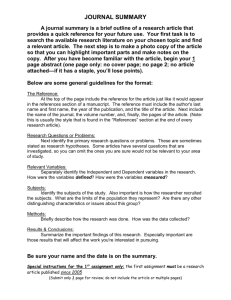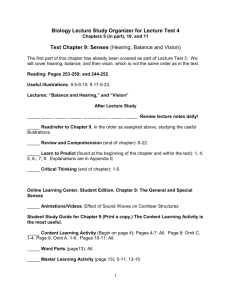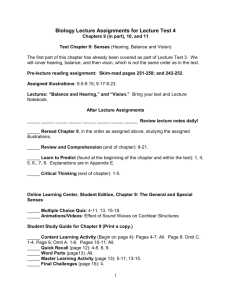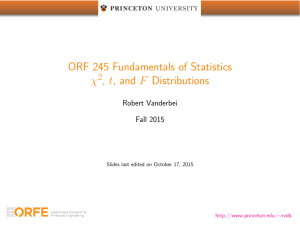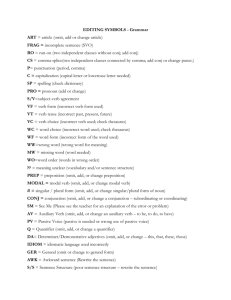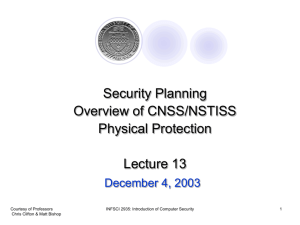6th Edition of Wade
advertisement
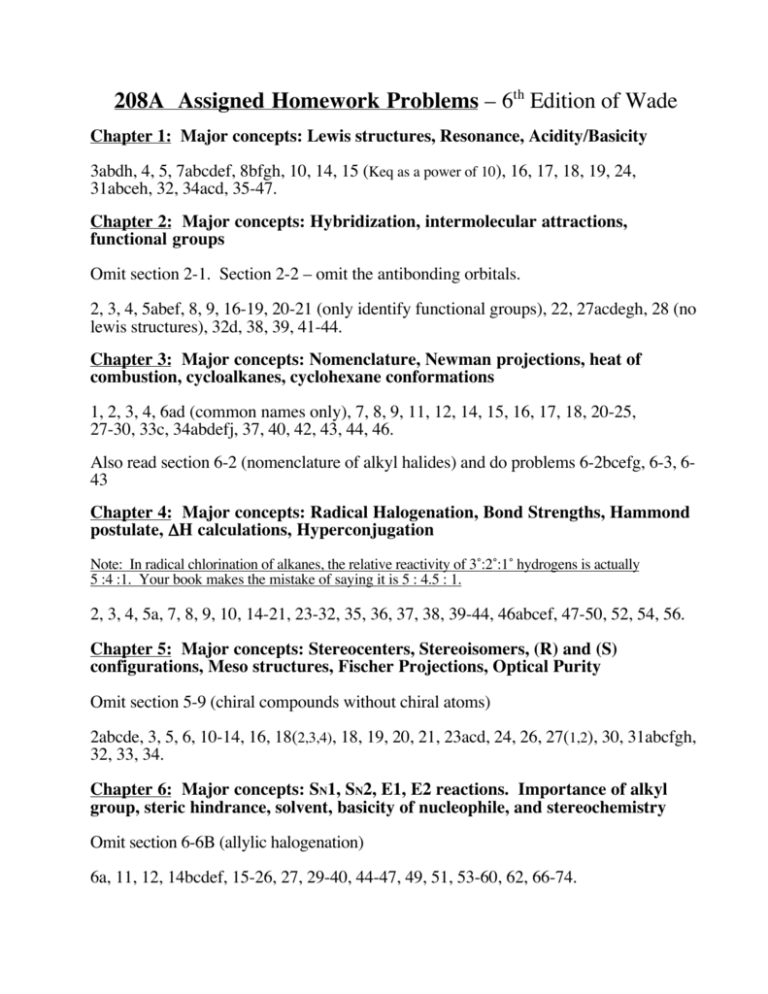
208A Assigned Homework Problems – 6th Edition of Wade Chapter 1: Major concepts: Lewis structures, Resonance, Acidity/Basicity 3abdh, 4, 5, 7abcdef, 8bfgh, 10, 14, 15 (Keq as a power of 10), 16, 17, 18, 19, 24, 31abceh, 32, 34acd, 35-47. Chapter 2: Major concepts: Hybridization, intermolecular attractions, functional groups Omit section 2-1. Section 2-2 – omit the antibonding orbitals. 2, 3, 4, 5abef, 8, 9, 16-19, 20-21 (only identify functional groups), 22, 27acdegh, 28 (no lewis structures), 32d, 38, 39, 41-44. Chapter 3: Major concepts: Nomenclature, Newman projections, heat of combustion, cycloalkanes, cyclohexane conformations 1, 2, 3, 4, 6ad (common names only), 7, 8, 9, 11, 12, 14, 15, 16, 17, 18, 20-25, 27-30, 33c, 34abdefj, 37, 40, 42, 43, 44, 46. Also read section 6-2 (nomenclature of alkyl halides) and do problems 6-2bcefg, 6-3, 643 Chapter 4: Major concepts: Radical Halogenation, Bond Strengths, Hammond postulate, ΔH calculations, Hyperconjugation Note: In radical chlorination of alkanes, the relative reactivity of 3˚:2˚:1˚ hydrogens is actually 5 :4 :1. Your book makes the mistake of saying it is 5 : 4.5 : 1. 2, 3, 4, 5a, 7, 8, 9, 10, 14-21, 23-32, 35, 36, 37, 38, 39-44, 46abcef, 47-50, 52, 54, 56. Chapter 5: Major concepts: Stereocenters, Stereoisomers, (R) and (S) configurations, Meso structures, Fischer Projections, Optical Purity Omit section 5-9 (chiral compounds without chiral atoms) 2abcde, 3, 5, 6, 10-14, 16, 18(2,3,4), 18, 19, 20, 21, 23acd, 24, 26, 27(1,2), 30, 31abcfgh, 32, 33, 34. Chapter 6: Major concepts: SN1, SN2, E1, E2 reactions. Importance of alkyl group, steric hindrance, solvent, basicity of nucleophile, and stereochemistry Omit section 6-6B (allylic halogenation) 6a, 11, 12, 14bcdef, 15-26, 27, 29-40, 44-47, 49, 51, 53-60, 62, 66-74. 208A Assigned Homework Problems – 6th Edition of Wade Chapter 7: Major concepts: Alkenes: degrees of unsaturation, nomenclature (E or Z), synthesis via E1 and E2 reactions, measuring stability by heat of hydrogenation Omit section 7-9D 1, 4, 5(omit g), 8, 9, 10, 11, 13-19, 20, 24-29, 31, 32, 33, 38, 39ab, 40bcd, 41, 42, 43a, 44-48, 50-52, 54-56. Chapter 8: Major concepts: Regiochemical (which side of alkene) and stereochemical (cis or trans addition) predictions of alkene reaction products. Omit section 8-16C (anionic polymerization) 1-4, 6, 7-24, 26-29, 30, 31(structures only), 32-42, 44, 45a, 47-53, 55-64, 66-68, 70, 72. Note: in order to do many of these problems, you will need to learn nomenclature of alcohols. This is covered in chapter 10, section 10-3. Also read chapter 26, sections 26-1 through 26-2B. (Polymers). Do problems 1, 2, 3, 4, 5ab. Chapter 9: Major concepts: Nomenclature of alkynes, similarity between alkyne and alkene reactions. 5–8, 10, 11c, 12-21, 23, 24, 25, 27, 29, 32, 33, 34, 36-40, 41a 208A Assigned Homework Problems – 6th Edition of Wade Chapter 10: Major concepts: Nomenclature of alcohols, hydrogen bonding, oxidation/reduction, inductive effect, Grignard reaction, acid/base chemistry Skip sections 10-3D (422), 10-6C (429-430), 10-9D (439-441). In addition, I will not test nomenclature of thiols. 1b-f, 2 (IUPAC), 4, 5, 6, 7, 8, 11-15, 19, 20, 22, 23, 24ad, 25ad, 26abc, 27, 31a-e, 32b, 33bcdeh, 34-37, 38abcdefklmn, 39a-e, 40abc, 41d, 43abcdf, 44, 47-49, 51. Also do problem 5 in chapter 8. Chapter 11: Major concepts: Oxidation/reduction, conversion to halides and tosylates, ether synthesis Omit section 11-12 (esterification), 11-13B, and 11-13C. Ignore anything to do with the stereochemistry of thionyl chloride reactions. 1, 2abceg, 3-13, 15, 16, 17, 19b, 21. 22, 24-26, 27acd, 28, 29, 30, 32-35, 37a, 38, 40, 41, 42 (try to find a different answer for c), 43, 47, 48 (omit d), 49, 51, 52, 53 (omit Z), 55, 56 (omit d and find a different answer for a), 57, 58. Chapter 12: Only concept: Using IR spectroscopy to identify functional groups. Omit section 12-9C and 12-13 to the end of the chapter. This is primarily Mass Spec, and it will not be covered in our class. 2, 3, 4, 6a, 14, 15adef, 16, 19a 208A Assigned Homework Problems – 6th Edition of Wade Chapter 13: Only concept: Using NMR to determine the structure of compounds. I will not cover “diastereotopic” or “enantiotopic” protons. In addition, I will not test you on the “physics” of NMR. I will only expect you to predict the NMR spectrum of a compound, or to use the NMR spectrum to determine the structure of a compound. 1acd, 2, 3, 4, 5, 6, 7acd, 8, 9ab, 10, 11a, 12, 13b (the peak is a double of triplets, J = 7 Hz and 16 Hz), 19, 20, 21b, 23, 24d (4.2 ppm is a quintet, 5.1 is doublet of doublets, J = 1 Hz, 10 Hz; 5.2 is doublet of doublets, J = 1 Hz, 16 Hz), 24e (peak at 0.9 is an overlapping doublet and triplet), 25 (number of peaks only – no shifts), 26b, 32 (compound 2), 34, 35abcdefjk, 36, 39abc, 40, 44, 45 (A: singlet at 1.7 ppm, singlet at 1.6 ppm, doublet at 1.55 ppm, J = 7 Hz), 48 (7.0 ppm is a doublet of triplets, J = 10, 7 Hz; 6.05 ppm is a doublet, J = 10 Hz; 2.1 ppm is a triplet, J = 7 Hz), 50, 52a (carbon and proton NMR) Here are the molecular formulae and IR for selected problems: 11a 21a 21b 24d 24e 32 36 44 45 48 2950 3200-3400, 2935 3200-3500 (broad peak with two short sharp peaks), 2960 3200-3400, 3055, 2915 3200-3400, 2935 2955 C4H9Br 3200-3500, 2950 3200-3500, 2960 C3H8O – “ultra” pure 3050, 2935 for both A and B 3050, 2945, 1680 C6H8O Chapter 14: Major concepts: synthesis and reactions of ethers, opening epoxides, oxidation/reduction of sulfur compounds. I will not test the nomenclature of sulfides. I will not test the nomenclature of cyclic ethers, but you will need to know it to determine the structures of the starting materials in some of the problems. 3, 4, 5, 8, 9abde, 10-15, 17, 21-28, 30abch, 31abf, 32abcde, 33, 35, 37-39, 41-45, 46 (formula is C6 H1 4O3 ), 48 208B Assigned Homework Problems – 6th Edition Chapter 15: Major concepts: Allylic position, dienes, resonance, kinetic and thermodynamic control of reactions. Omit sections 15-3 and 15-8 (Molecular orbitals), 15-12, and 15-13 (pericyclic reactions and UV-VIS spectroscopy). Skip section 15-11 (Diels-Alder reaction): we will cover this reaction later in the semester. 1, 2, 4-12, 24, 25a-g, 27, 29, 31, 37a (In the first reaction in this problem, A is produced as the major product. However, there is another minor product from this first reaction. Try to determine the structure of this minor product, and explain why A is the major product.) Also read section 25-8 (Terpenes, 1213-1217), and do problems 11, 12, 13, 15d (circle the isoprenes), and 27 in chapter 25. Read section 26-5 (Synthetic rubbers, 1230-1232), and do problems 11 and 27 in chapter 26.
